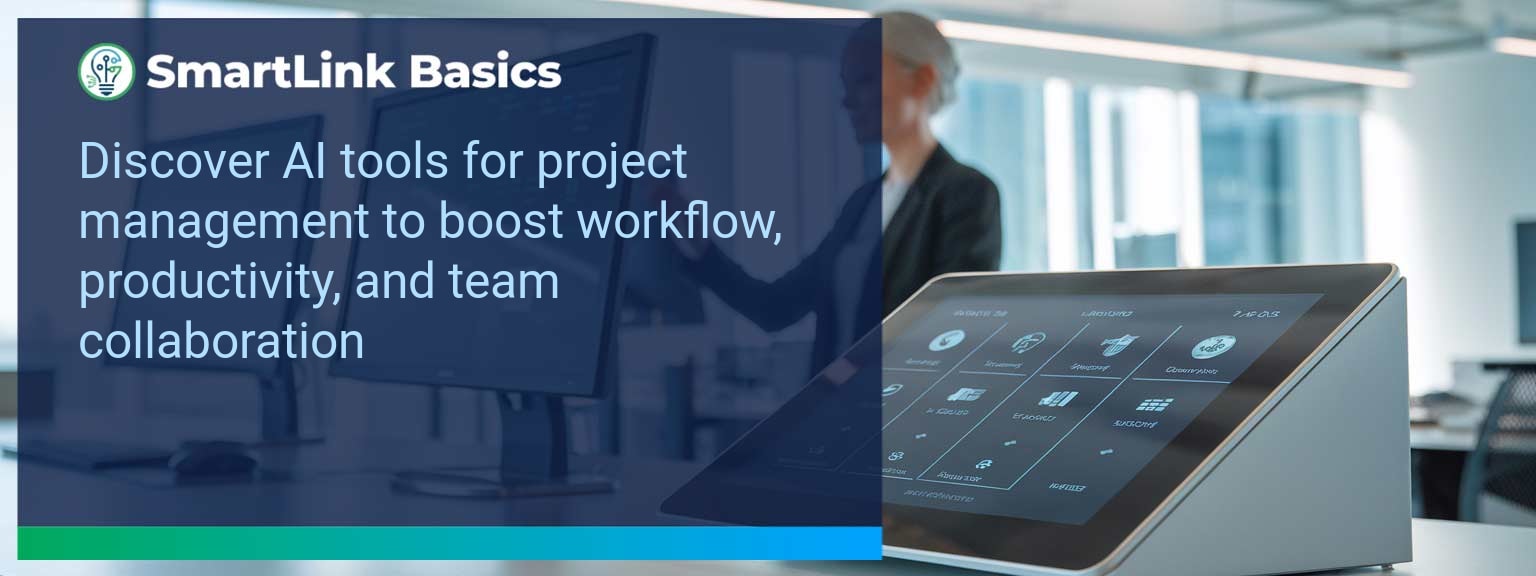A McKinsey study found that AI adoption in business operations can improve productivity by up to 40%. For sales leaders, project execution speed directly affects revenue outcomes, making AI-driven solutions a competitive necessity. At SmartLink Basics, we see AI tools for project management becoming central to how high-performance teams organize, prioritize, and deliver work.
This article outlines how AI capabilities can remove bottlenecks, align cross-functional teams, and ensure every initiative moves toward measurable business results. You will learn the core challenges of manual project management, the specific ways AI solves these issues, and how automation drives consistent, scalable efficiency in sales operations.
- AI simplifies task tracking across complex workflows
- Automated insights optimize resource allocation
- Real-time analytics enable faster decision-making
- Predictive forecasting reduces missed deadlines
- Integrated communication improves team collaboration
What Changed and Why AI Tools for Project Management Matter Now
Organizing projects manually relies on fragmented communication, static spreadsheets, and delayed reporting. Competitive markets no longer allow those delays. AI tools for project management provide automated tracking, predictive scheduling, and workflow automation from one platform. These capabilities keep sales teams agile and capable of adjusting course without losing momentum. For example, integrating AI-powered forecasting into your CRM can reveal likely delivery bottlenecks before they derail a product launch timeline. To succeed, leaders should embed AI-driven planning as a core operational pillar rather than treating it as an afterthought.Redesign the Revenue Operating System with AI Tools for Project Management
ICP, Segmentation, and Targeting
AI platforms can segment ideal customer profiles by analyzing historical sales data and market trends. This enables surgical prioritization of accounts aligned with organizational goals.Pipeline Architecture
Integrating AI into pipeline management automates lead scoring and stage progression, reducing manual oversight. Forecast accuracy improves when the system adjusts probabilities based on real-time activity patterns.Plays and Messaging
AI productivity tools tailor outreach sequences based on past engagement, ensuring relevance and increasing conversion rates without extra workload on account managers.Operating Cadence
Automated reminders and progress dashboards maintain execution discipline, allowing leadership to redirect resources when necessary instead of reacting after delays.Common Obstacles In Managing Projects Manually
Without AI, project oversight depends on static checklists and inconsistent status updates, leading to missed dependencies. Time management suffers as leaders track down progress reports instead of reviewing consolidated dashboards. For instance, a sales enablement initiative involving three departments can quickly lose clarity if updates only occur in scattered emails. This slows decision-making and creates rework when priorities shift. An actionable approach is to replace fragmented communication with centralized AI-enabled dashboards to keep everyone aligned and accountable at all times.How AI Tools Address Project Management Challenges
AI platforms overcome manual inefficiencies by integrating task tracking, team collaboration hubs, and predictive analytics into one ecosystem. Machine learning tools learn from previous project data, recommending optimal task sequences. In a high-volume sales environment, this means account managers can see task dependencies, risk alerts, and client interaction summaries in real time. That level of context directly supports proactive action instead of firefighting. Leaders should define clear success metrics before adoption to ensure the AI supports desired revenue and delivery outcomes.Improved Efficiency Through Automation
Workflow automation reduces manual scheduling, assigns tasks intelligently, and triggers follow-ups without human intervention. This accelerates critical handoffs and minimizes redundant status meetings. For example, an AI-driven project management software can automatically generate and distribute weekly performance summaries, eliminating hours of manual report preparation. The most effective automation strategies align with existing processes, enhancing speed without sacrificing project quality or compliance.The Evolving Role Of AI In Project Management
As AI continues to advance, its role will move beyond workflow optimization into strategic foresight. Predictive models will assist in shaping initiatives before they start, factoring market signals and team capacity into planning. For sales leaders, the future lies in combining AI-driven execution data with strategic decision-making frameworks, creating a closed loop between insight and action. To stay competitive, organizations should continuously train teams on evolving AI capabilities and re-evaluate tech stacks quarterly. You can explore more through AI-driven sales enablement resources from SmartLink Basics.Metrics That Matter
| Category | Metric | Definition | Target |
|---|---|---|---|
| Leading | Task Completion Rate | Percentage of tasks completed on or before due date | 95% |
| Lagging | Project Delivery Time | Actual delivery date versus planned date | ±3% variance |
| Quality | Rework Rate | Percentage of tasks requiring rework or corrections | Below 5% |
Get the 90-day plan, coaching rubric, and dashboard template to operationalize AI in your enablement program.









